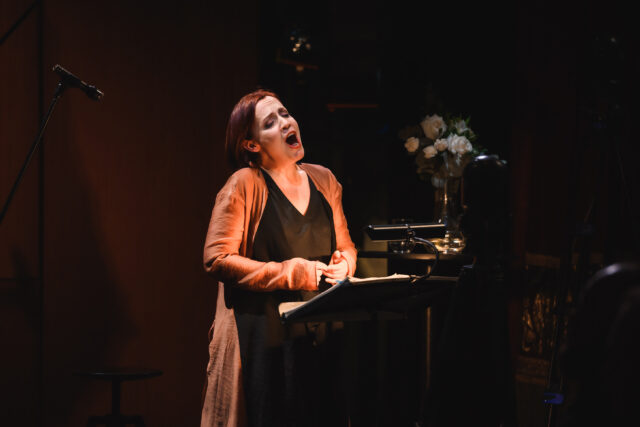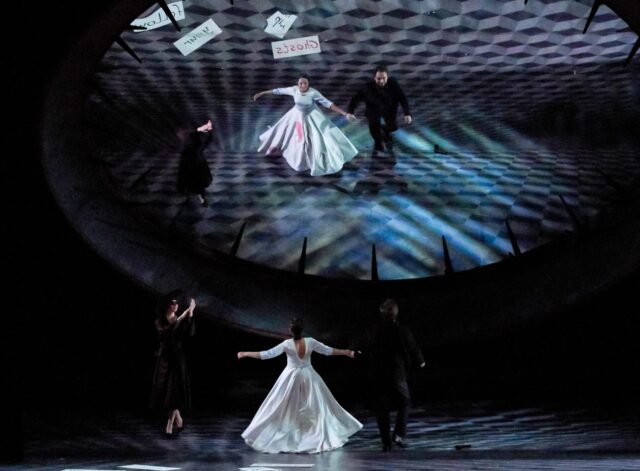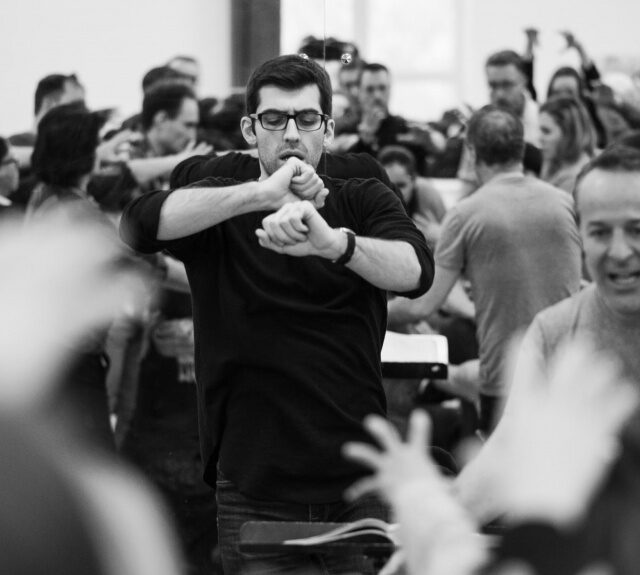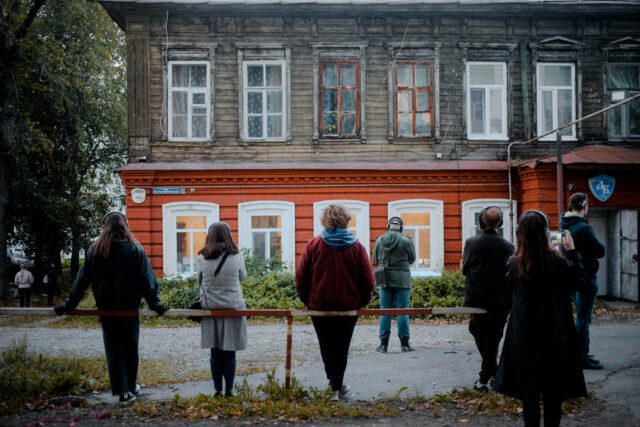It was Alexey Miroshnichenko who brought the idea of staging Forsythe to Perm. The young Principal Ballet Master came to the Urals from the Mariinsky Theatre inSt. Petersburg, where he was ‘Head of Forsythe’ — the coach for Forsythe’s works. Three years ago, the idea seemed a starry-eyed illusion: thePerm company danced in a dignified, solemn, and slow manner — in other words, the exact opposite of what Forsythe demands from his performers. His compositions are tailored, it seems, to some kind of extra-terrestrial being, with molten plasma for joints and a red-hot engine for a heart.
The Second Detail, chosen for the Perm debut, was created in the period when the choreographer had not moved onto the most complex dance routines, but instead was looking at the possibilities of a ballet that was beyond classical, but still pointe. Forsythe uncouples the old constructions and joins them back together in inconceivable sequences, heating them to boiling point to the blistering tempo of Thom Willems’ music, cooling things down with functional tights and leotards, and building up the pressure with the help of superhuman extremes of choreography. He mercilessly bends and twists the dancers’ joints, sending them into unthinkable holds, forcing them to rotate on all planes, with no regard for the laws of physics.
This was the barren, strict world that awaited the princesses from the Urals, who even danced Balanchine voluptuously. Moreover, the company from Permwas set a real challenge: unlike many of Forsythe’s hits, The Second Detail was not written for individual masters, but for over a dozen dancers. Each figure in silver tights was mercilessly distinct in the electric light of the balletic operating theatre. But the company coped with the shock of their bodily imperfections. Much more difficult was emerging into centre stage from the faceless group, a device used constantly by Forsythe in The Second Detail. Losses of tempo and missed finishing points generally occurred right in the foreground. On the other hand, the continuous combinations, rattled out machine-gun-like, almost prevented the emergence of the spiritual reflections that Russian artistes love to instil in this form of advanced mathematics. The mechanism of greater forces worked perfectly and seamlessly. When, in the finale, this alien energy came head to head with a girl in a white dress who unexpectedly burst into the centre of the stage, it short-circuited in exactly the way it should in Forsythe’s productions. The Perm première of The Second Detail did not knock the Earth from its axis, but it did change some viewers’ perception of ballet forever.
Anna Galayda



